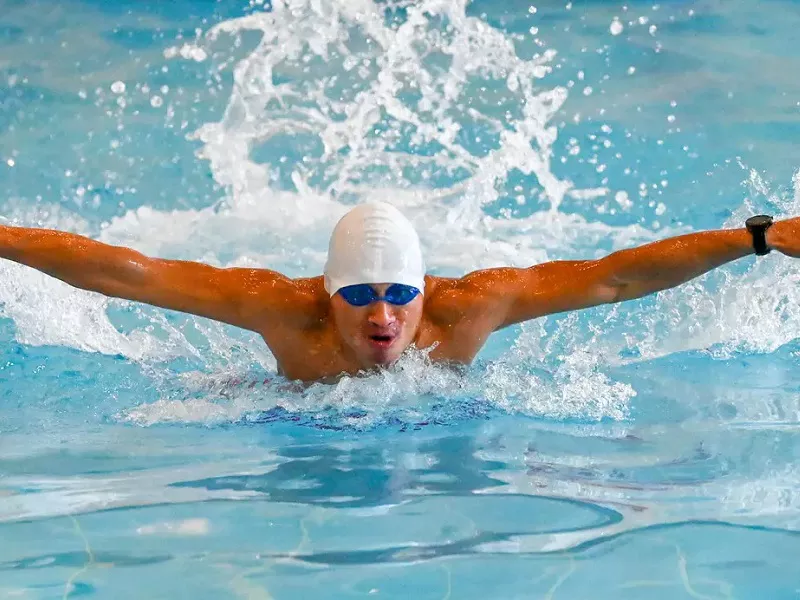Swimming is a fantastic full-body workout that engages multiple muscle groups, including the abdominal muscles. While all swimming strokes offer benefits for core strength and conditioning, some exercises may have a more significant impact on the abs than others. In this article, we will explore various swimming exercises and determine which ones are best for targeting and strengthening the abdominal muscles.
Understanding the Abdominal Muscles
Before diving into the specific swimming exercises, let’s have a brief overview of the abdominal muscles. The abdomen consists of several muscle groups, including the rectus abdominis, transverse abdominis, external obliques, and internal obliques. These muscles play a crucial role in stabilizing the core, supporting good posture, and facilitating movements such as rotation and flexion of the torso.
The Butterfly Stroke: A Powerhouse for Abdominal Strength
When it comes to swimming exercises that target the abdominal muscles, the butterfly stroke takes center stage. The butterfly is an advanced swimming technique that involves an undulating motion of the body, resembling the movement of a dolphin. This stroke engages the entire body, including the arms, legs, back, chest, and most notably, the abdominal muscles.
The butterfly stroke requires a powerful kick and simultaneous arm movement, generating substantial force and requiring strong core engagement. The undulating movement of the body relies heavily on the abdominal muscles’ strength and coordination, making it an excellent exercise for developing a strong and defined core.
As you execute the butterfly stroke, your abdominal muscles contract forcefully to stabilize the body and generate power during each kick and arm pull. This continuous activation of the abdominal muscles helps build strength, endurance, and tone in the abs over time. It also contributes to improved core stability and overall swimming efficiency.
Incorporating Freestyle and Backstroke for Abdominal Conditioning
While the butterfly stroke is particularly effective for strengthening the abdominal muscles, other swimming exercises such as freestyle (also known as the front crawl) and backstroke also contribute to abdominal conditioning.
Freestyle is the most commonly practiced swimming stroke, characterized by an alternating arm movement combined with a flutter kick. Although its primary focus is on the upper body, including the shoulders, arms, and chest, freestyle swimming engages the core muscles throughout the entire stroke cycle. The rotational movements of the torso during each arm pull activate the oblique muscles, providing some level of abdominal strengthening.
Similarly, backstroke involves an alternating arm movement and a flutter kick while lying on your back. While it primarily targets the muscles of the back, shoulders, and arms, backstroke also engages the core muscles, including the abdominals, to maintain stability and proper body alignment in the water. The continuous activation of the abdominal muscles during backstroke contributes to core strength and endurance.
Maximizing Abdominal Benefits with Proper Technique and Intensity
To derive the maximum benefits for your abdominal muscles from swimming exercises, it’s crucial to practice proper technique and incorporate intensity into your workouts.
Firstly, focus on maintaining good body alignment and posture while swimming. Keeping your body streamlined and your core muscles engaged throughout each stroke will ensure that you effectively target the abdominal muscles. Engaging the core means actively squeezing the abdominal muscles and maintaining a stable torso position during the entire swim.
Secondly, pay attention to your breathing technique. Proper breathing not only enhances your overall swimming performance but also engages the abdominal muscles. During each stroke, exhale forcefully through your mouth to activate the deep core muscles and maintain stability. Inhale deeply when your face is out of the water to replenish oxygen.
Thirdly, vary the intensity of your swimming workouts. Incorporate interval training, where you alternate between periods of high-intensity swimming and active recovery. High-intensity intervals, such as sprinting or performing faster-paced strokes, increase the demand on the abdominal muscles, leading to more significant strength gains and toning.
Supplementary Exercises for Abdominal Strengthening
While swimming exercises can effectively target and strengthen the abdominal muscles, incorporating supplementary exercises outside of the water can further enhance your abdominal training routine. These exercises can provide additional resistance and isolation for the abs, complementing the benefits derived from swimming.
Plank variations:
Planks are excellent for core strengthening as they engage the entire abdominal region. Include front planks, side planks, and plank twists in your routine to target different areas of the abs.
Bicycle crunches:
Lie on your back and mimic a cycling motion while simultaneously bringing opposite elbow and knee together. This exercise effectively engages the rectus abdominis and obliques.
Russian twists:
Sit with your feet elevated and rotate your torso from side to side while holding a weight or medicine ball. Russian twists primarily target the oblique muscles.
Leg raises:
Hanging leg raises or lying leg raises are great exercises for targeting the lower abdominal muscles. These exercises involve lifting the legs while keeping them straight, either from a hanging bar or while lying on a mat.
Stability ball exercises:
Incorporate stability balls into exercises like crunches or planks to add an element of instability, challenging your core muscles to maintain balance and stability.
By including these supplementary exercises in your routine, you can specifically target and strengthen the abdominal muscles to further enhance your overall core strength and definition.
Conclusion
Swimming offers a range of exercises that engage the abdominal muscles and contribute to core strength and conditioning. The butterfly stroke stands out as a powerhouse for abdominal strength, requiring strong core engagement throughout the undulating body movement. Freestyle and backstroke also provide benefits for abdominal conditioning, although to a slightly lesser extent.
Remember to consult with a qualified swimming instructor or fitness professional to ensure proper form and technique while performing these exercises. By combining swimming exercises with targeted abdominal exercises, you can achieve a well-rounded and effective approach to strengthening and toning your abdominal muscles.
Related topics:


